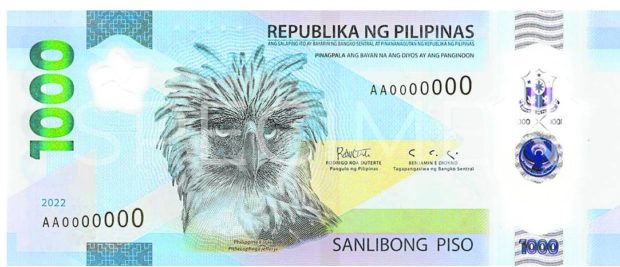The 1,000-peso paper banknote and all other peso bills as well as coins that are currently in circulation will not be demonetized—at least until mid-2023—even as banks have received the initial 10-million pieces of the new 1,000-peso polymer banknote.
The Bangko Sentral ng Pilipinas (BSP) said on Tuesday the issuance of polymer banknotes—to be done in phases—began last week with a limited quantity.
The BSP intends that by 2023, there will be 500 million pieces of the plastic banknotes. This represents a trial through which the regulator will assess the feasibility of turning to polymers for the rest of the peso banknotes.
According to the BSP, the first batch of plastic bills is equivalent to 0.7 percent of the estimated combined number of 1000-peso paper and polymer banknotes now in circulation.
“Prior to release [of the 10 milion pieces], the BSP conducted technical briefings for bank personnel, machine suppliers, and cash-in-transit service providers to educate them on the design and security features of the polymer banknotes,” the BSP said.
Earlier this month, BSP Governor Benjamin Diokno said that it might take about six months for the new banknote to be widely circulated, considering that banks need as much time to reconfigure their automated teller machines to accommodate the plastic bill.
Diokno has reiterated that there will be no demonetization of currently circulating banknotes and coins during his term, which ends in July 2023.
The BSP made this latest clarification apparently in anticipation of a similar question raised when the 20-peso coin was issued in December 2019.
Regarding that, the BSP said the 20-peso coin shall co-exist as legal tender with the currently-circulating 20-peso NGC banknote, which will be removed from circulation through natural attrition. This meant that, while the older version will not be demonitized, its supply will not be replenished. INQ
